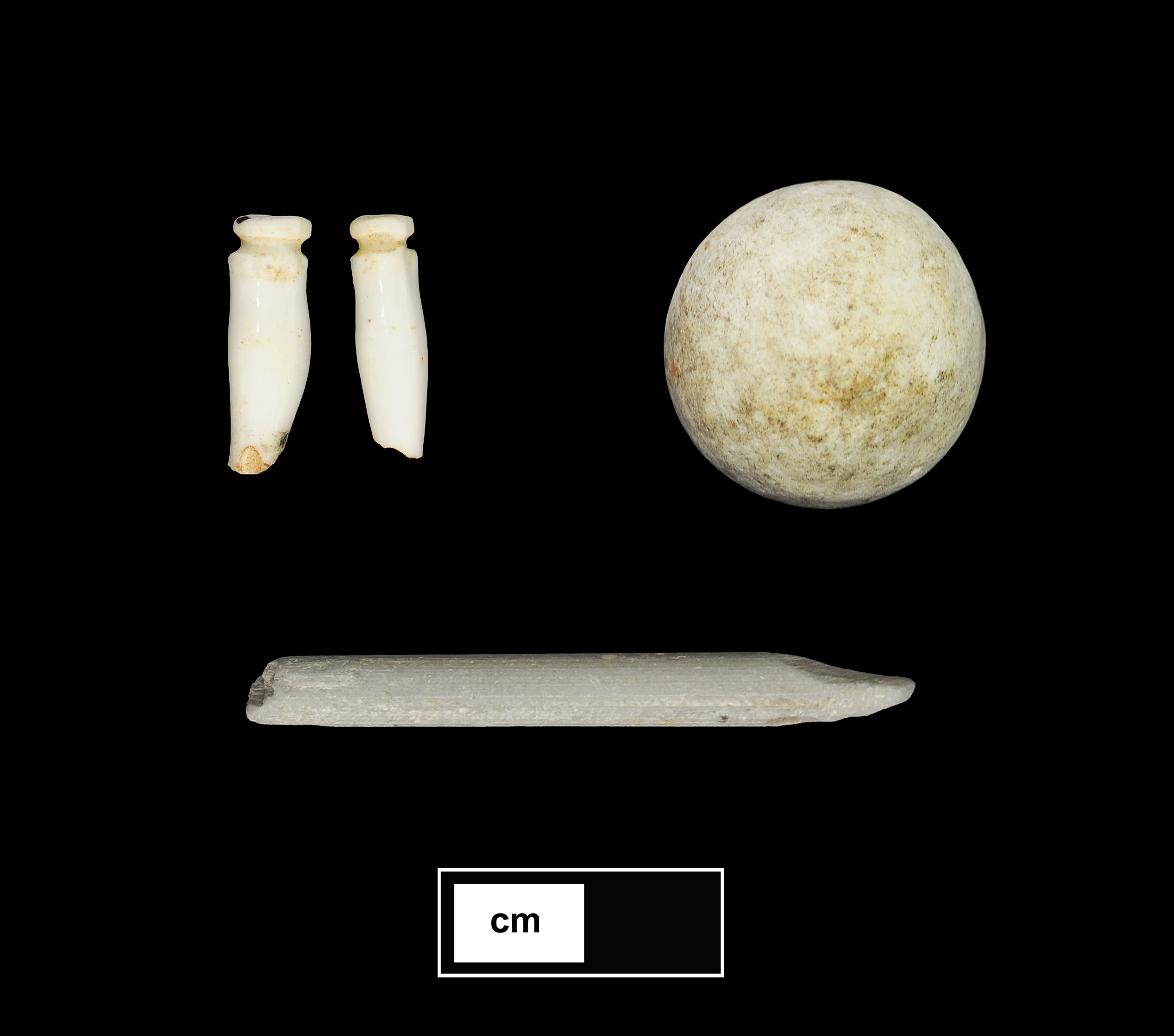A few well-worn or broken slate pencils, a plain porcelain marble, and a few doll parts comprise the objects that can be associated with the presence of children on this property.

Doll Limbs
Two porcelain doll limbs of similar size appear to have come from the same small doll. Both pieces are broken on one end and feature a similar molded narrow groove for attaching the pieces to a cloth body. The limb fragments appear to be an arm and leg missing the hand and foot, respectively. The leg fragment measures under 0.8 of an inch in length, with some black paint evident beneath the glaze at the broken end—likely intended to represent the top of a shoe. The white glazed arm and leg probably originated from a doll with a solid china head and shoulder plate. Dolls of this type were popular from the 1840s through 1930s. 1 The small size of these limbs suggests that the doll was intended for dollhouse play.
References
- Mary Gorham Krombholz, Identifying German Chinas 1840s–1930s (Grantsville, Maryland: Hobby House Press, Inc., 2004), 16. ↩